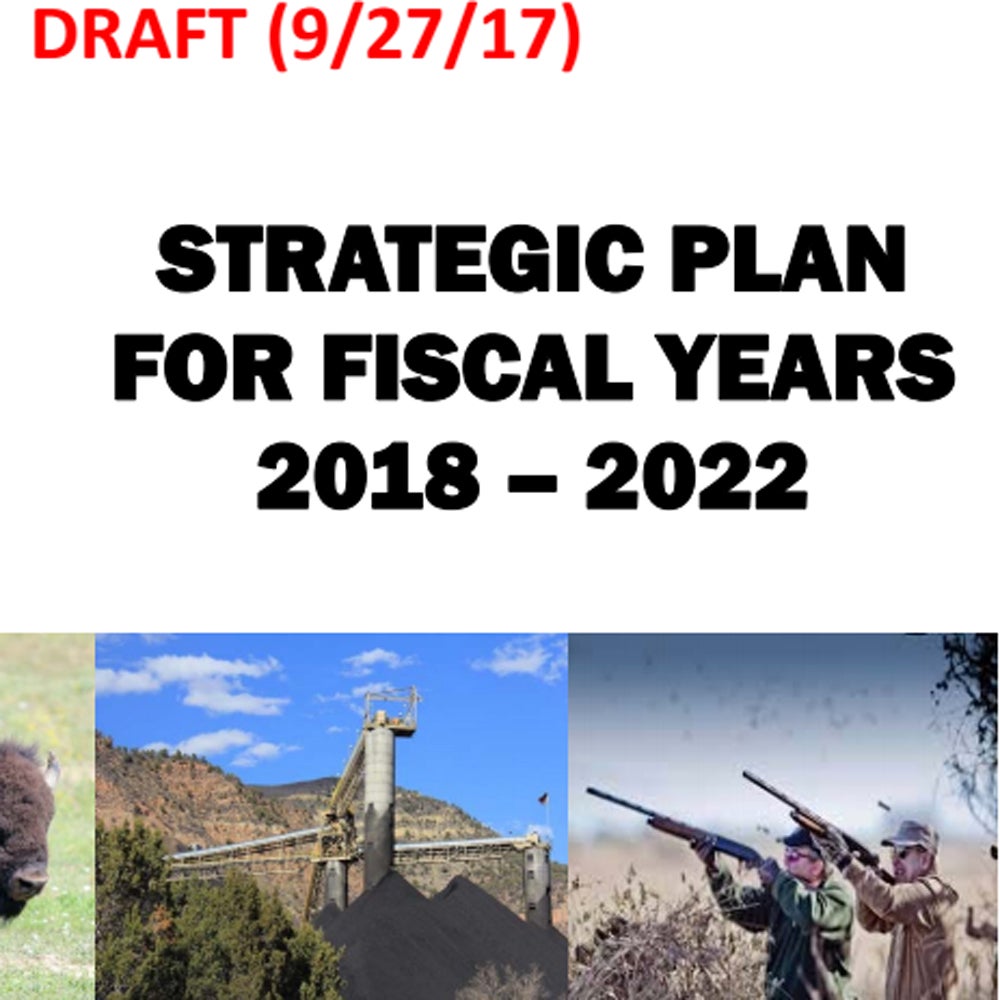A leaked five-year strategic plan for the Department of Interior, which oversees 20 percent of the nation’s landmass, has removed the words “climate change” from its pages.
While the new plan still lists conservation of land and water as the department’s main goal, it now underscores the need to achieve and maintain America’s “energy dominance” by tapping into the “vast amounts of untapped domestic energy reserves on public lands.” That phrase has been a buzzword of Secretary of Interior Ryan Zinke since he took office earlier this year.
“This is probably the most holistic look at what (Zinke) and his deputies’ priorities are for the rest of their tenure,” says Greg Zimmerman, the deputy director of the progressive advocacy group Center for Western Priorities.
Its refusal to acknowledge or deal with climate change sets this plan apart from the its predecessor, written during the Obama Administration, which mentioned the phrase “climate change” 47 times. Including the phrase showed a philosophical understanding and imperative to take climate change seriously.
It’s clear that philosophy is now lacking from the Interior’s five-year strategy. This plan is intended as the organization’s guiding document, and it will now guide public-land organizations including the National Park Service, U.S. Fish and Wildlife Service, Bureau of Land Management, as well as agencies such as the Office of Surface Mining.
Combined, these moves show the “Zinke Doctrine”: Easier access by energy companies to public lands while making it more expensive for the general public.
Though Zinke is chief steward of the nation’s public lands, the 50-page plan mentions national monuments, wilderness areas, and Wild and Scenic rivers (a landmark environmental law that celebrates its 50th birthday next year) only once, in passing. “This is another example of the administration and the Department of Interior under Zinke being off track from where the American public is,” says Brian Sybert, executive director of the Conservation Lands Foundation, which works to protect National Conservation Lands, a designation that encompasses more than 37 million acres of BLM public land. “This is not the leadership our public lands need.”
The Nation first reported details of the leaked plan on its website. The magazine said that the plan had already been submitted to the White House. The Department of Interior did not respond to our request for comment.
The emphasis in the document is clearly on broadening the scale, and increasing the pace, of energy development on public lands, says Zimmerman. For example, once a company expresses interest in leasing Bureau of Land Management land for drilling, the plan sets a goal that 80 percent of those expressions of interest will be processed within six months.
The Department of Interior is establishing an Executive Committee for Expedited Permitting “to expedite the responsible leasing and permitting of energy and mineral production,” the plan says. The department also hopes to halve the time it takes to approve oil and gas projects on Native lands.
The strategic plan appears during a week when the Department of Interior has already proposed to as much as triple entry fees to national parks in high season. The fee hike has already received blowback from activists who think it will make the parks less inclusive, something the new strategic plan seems to echo: no where does it mention “diversity” or “inclusion,” two key Obama-era initiatives.
Combined, these moves show the “Zinke Doctrine,” contends Zimmerman: easier access by energy companies to public lands while making it more expensive for the general public.
Some conservationists once had high hopes for Zinke, a Montanan who compares himself favorably to Teddy Roosevelt. But the Secretary, who rode into town on a horse literally wearing a black hat, has disappointed them repeatedly. He has suggested dismantling national monuments and rankled longtime Interior employees by accusing them of disloyalty. He’s even goaded DOI staff by installing the arcade game “Big Buck Hunter” in the employee cafeteria.

